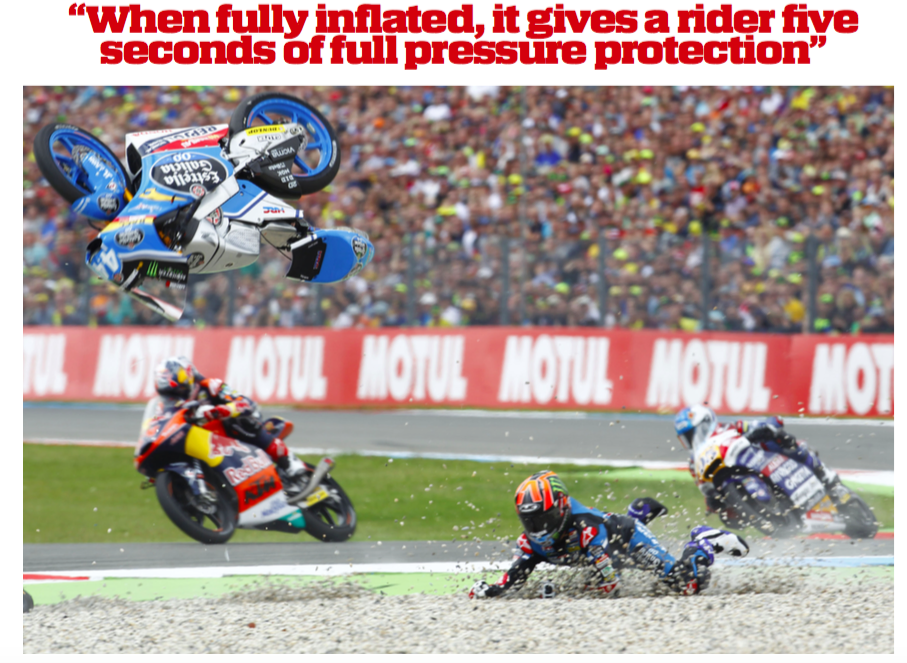Airbag technology is the latest and greatest advance in motorcycling safety apparel seen in a long time, and Alpinestars is leading the charge with their Tech-Air range
As a motorcyclist it’s hard not to notice the famous A-stars logo of Alpinestars that liberally adorns competitors riding apparel at virtually every major event that takes place. However, the wide reaching success of this brand truly belies the company’s humble beginnings at the foothills of the Dolomites where local cobbler Sante Mazzarolo first envisioned the now iconic brand. He studied his craft under the guidance of his father and grandfather before establishing Alpinestars and tapping into the conduit of relatively unexplored off-road motorcycling boots which would see the company explode on a skyward trajectory of unimpeded growth.
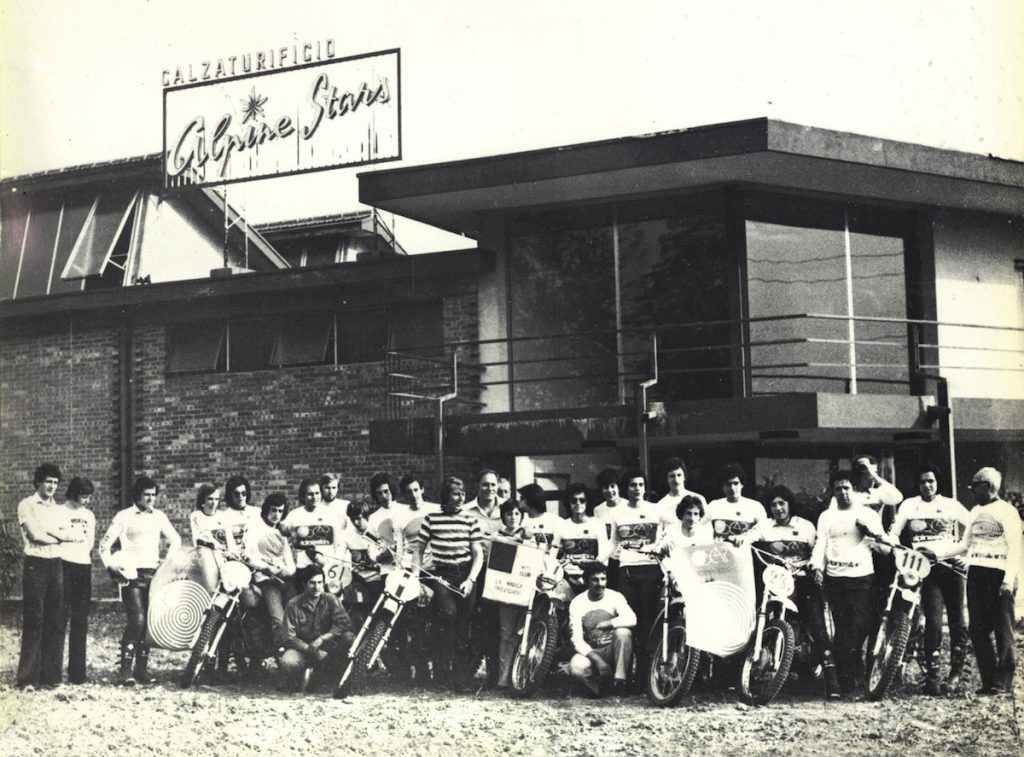
As a youth Mazzarolo travelled travelled the countryside with his father, fixing and repairing shoes in proximity to their base in Treviso, Italy. Given their location near the alps, hiking, hunting and skiing boots constituted a major part of their business and by 17-years old Sante was skilled enough to gain employment at a local hiking boot company where he gained insight into the business of footwear and manufacturing. After 11 years he decided to strike out on his own and in 1963 Alpinestars was born. The company was named after the Stella Alpina flower, also known as Edelweiss, which symbolises the early season challenge that climbers take to be the first to reach the high altitude region where this plant exists.
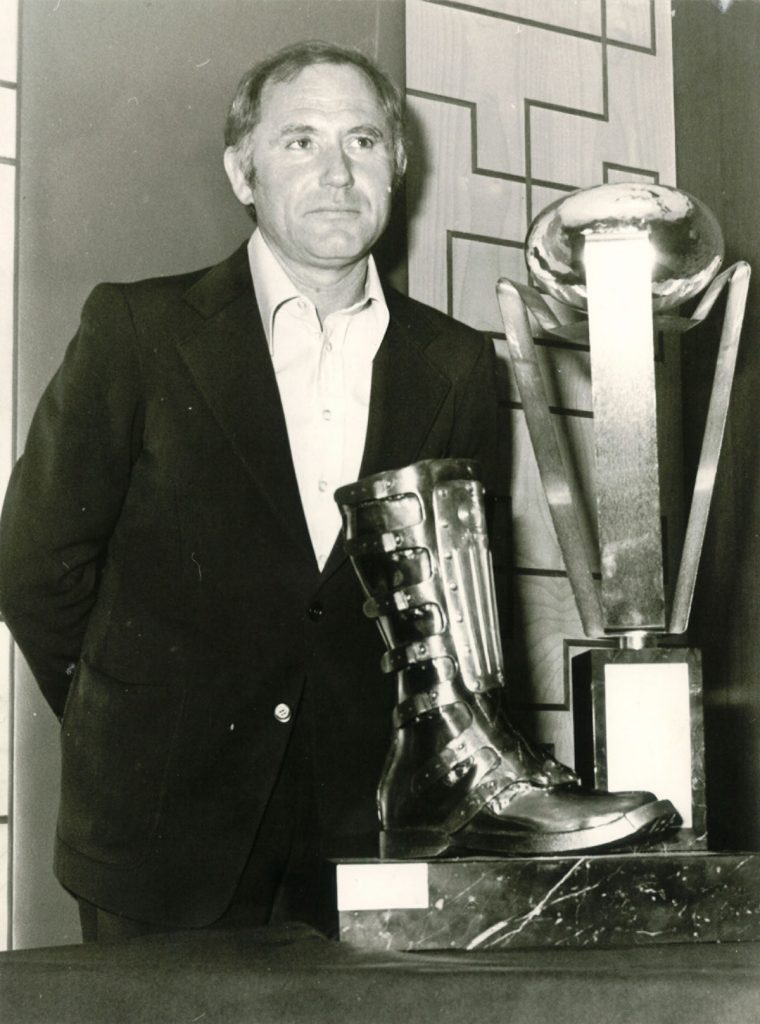
In the early stages Mazzarolo was only producing hand made hiking and ski boots, until a chance encounter with some motorcrossers piqued his interest in the as yet untapped market of off road riding boots. At that time, riders were using hiking or hunting boots to provide the riding protection necessary to protect their limbs from injury, and while Sante recognised the strengths of those products he also saw room to address the inadequacies with innovative new designs and materials. Through ongoing consultation with riders Mazzarolo customised a calf high boot with metal shin protection and a front opening secured by buckles. Its release coincided with vast advances in both the technology and popularity associated with the sport of motorcross received widely praises as only product available which met the needs of the market. When the 1968 Italian Six Day Trial took place, Alpinestars boots received world wide attention which further accelerated the expansion of company which has continued to grow over the last 50 years and now employs more than 450 staff across offices in Italy, Los Angeles, Bangkok and Tokyo.
Mazzarolo’s son Gabriel now runs the business but Sante is still very much involved from their headquarters in Asolo, and at heart Alpinestars remains true to its roots as a family bases business with a focus on racing and technical innovation.
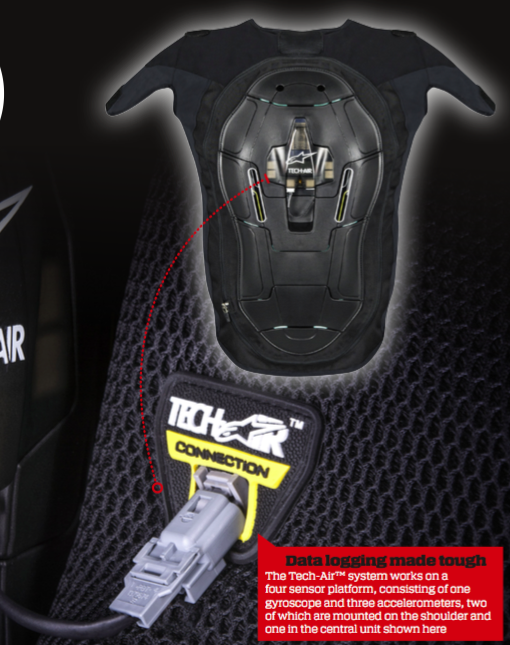
We speak to Colin Ballantyne, Chief Engineer at Alpinestars for over 12 years
We first saw the air bag system unveiled at the 2003 German MotoGP on John Hopkins Can you tell us how has the product has evolved since then, and what kind of advancement was required to bring this technology from the race track to the retail sector?
Strictly speaking the system shown in 2003 was the first generation datalogging system – it did not contain an airbag, but it was the foundation upon which research for the electronic airbag was started. Since 2003 we experimented with a number of datalogging systems until we found a suitable sensing platform. During that that time electronic have evolved such that we have more computing power in a smaller space, and sensors which are very compact – this assisted the integration into a final system.
We’ve been using automatically inflating airbags in automobiles for several decades to protect drivers and passengers – but trying to wrap that technology around a person, who may still need to maintain control of a motorcycle, must have required a much more sophisticated approach. How did you overcome the ergonomic, safety and design challenges that were presented throughout the R&D phase?
The development of the airbag was more straightforward than first envisaged – this was partly because many components (airbag technologies / inflators) already exist in the automotive industry, and it was a case of understanding the best modifications to make to these parts. During the development an extensive set of medical tests with an external consultancy were conducted to verify the safety of the system.
Were there any notable rider/s that played a key role in R&D, and if so, what kind of data comes back to the Alpinestars technical team after a crash?
Speaking of the first introduction of the system into racing, for sure Mikka Kallio and Andrea Dovizioso made a notable contribution to the development of the product. Airbags seem ‘standard’ items now, but back then they were viewed with suspicion. With regards to the data that is returned, each unit is recording all the data from the sensors on board and this is downloaded and fed back into the algorithm development. Of course the riders also give feedback on the fit of the system and how it performed when it was inflated.
Do they need servicing, and what kind of failsafe mechanisms are employed to ensure that suits don’t inflate unnecessarily while riding on the road or on track?
We recommend that the system is returned for inspection every 2 years (or less if used intensively). Strictly speaking the “failsafe” mechanism is integrated inside the algorithm – however the performance of the algorithm depends on the quantity of data that you can simulate with it. To this end we commissioned a special piece of software to simulate the algorithm and analyse the data output – we then run through around 400,000km of data files, and special misuse files to check that the system will only fire when the rider is under threat. The current algorithm is extremely robust in this respect.
What evidence is available to support the safety benefits of wearing Tech-Air™ suits, and their prevention of injury during a crash?
Based on the EN1621-2 impact test we can see the improvement in impact performance provided by the airbag – in some spots it is less than 1kN, so we know that the system provides good protection. However, the specific evidence that in an accident a defined benefit is provided is very difficult to ascertain because unless you have a rider crashing twice in exactly the same way, one time with, and one time without the airbag, it is very difficult to assess the degree in which the airbag reduced their injuries.
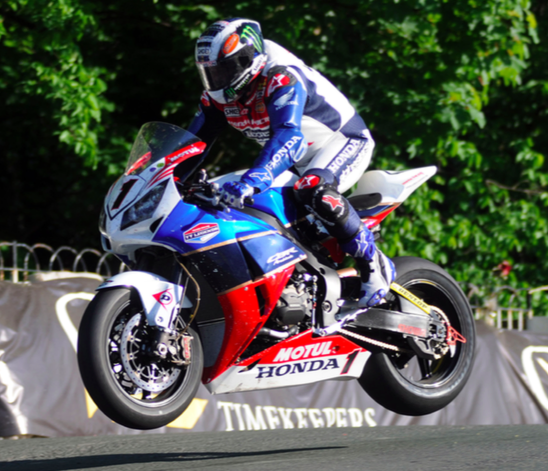
Tech Air technology is now standard use in MotoGP and common at the IOM
Where to now?
21st century rider safety
While air bag suits are undeniably the focus of todays market, there’s likely to be significant refinements to the technology as times wears on. Sales are projected to exceed 10,000 units in the next 2 years during which time the transition from the MotoGP paddock to the sales room floor will be complete. In fact, many of the Alpinestars sponsored riders that currently compete in the premier class are using the very same suits destined for Australian release in the near future.

Alpinestars marked their 50th anniversary in 2013 but where will the next 50 years take us? Safety sphere’s which turn crash victims into human Zorb balls, helmets with rider friendly night vision, HUD displays that incorporate wifi and GPS technology, bionic armour, ultra thin materials with exceptional heat and abrasion resistance are all tangible possibilities. While the company is tight lipped on exactly what products have been earmarked for R&D, it is clear that the advances in safety product development and high performance apparel currently taking place are a big win for motorcyclists from all disciplines. And given their reputation for pursuing dreams and setting the highest standards in safety equipment we expect that this Italian marque will continue to position themselves at the pinnacle of development.
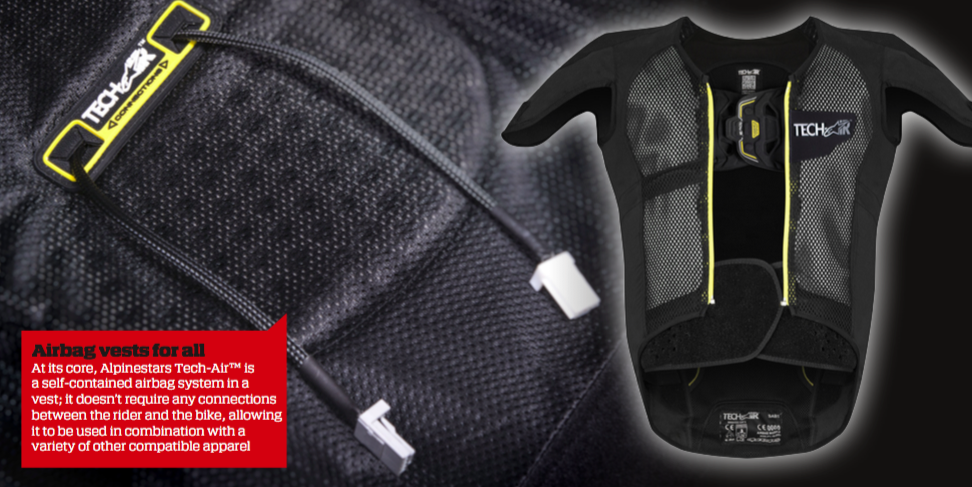
Tech-Air Suit
How does it work?
The Tech Air system works on a 4 sensor platform, consisting of 1 gyroscope and 3 accelerometers, 2 of which are mounted on the shoulder and one in the central unit. Fundamentally the system is monitoring the amount of energy on the body of the rider, and if high energy is seen the system will fire. Our experience shows it is difficult to infer high energy on the body without it actually being in distress in some way. We offer a number of options to our MotoGP riders, some are using a system identical to the retail product, and others are using a system closer to the previous generation system that is integrated in the suit and has 2 additional sensors on the body.
